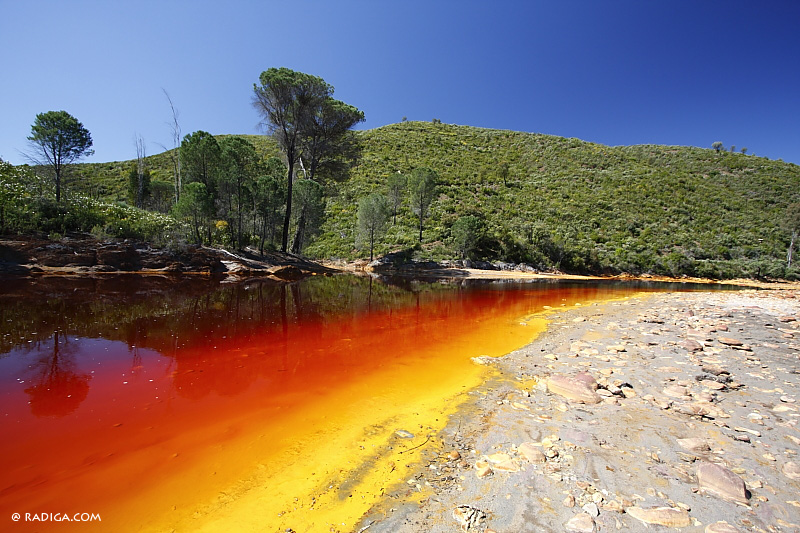
Swimming is a very relaxing and fun experience, not all pools or bodies of water are created equal—and some of them are not meant to be swimming or tourist spots.
We prepared you a list of the top 10 of the craziest, and therefore most dangerous pools in the whole world.

Spain’s “red river” is one of the most recognizable bodies of water in the country due to its deep red color. Known as the birthplace of the Copper and Bronze Age and the origin of Columbus’s 1492 expedition, its significance in history can’t be denied, but what caused its crimson hue? Some say that 5,000 years of mining pollution has made the river’s waters highly acidic (pH 1.7-2.5) and rich in heavy metals. However, the presence of chemolithotrophic organisms in the water has led others to believe that iron-oxidizing bacteria and sulfur-oxidizing bacteria are the true culprits. Whichever the case, Rio Tinto remains one of Spain’s marvelous but perilously “un-swimmable” rivers.
Lake Karachay – Southern Ural Mountains, Russia

Referred to as the most polluted spot on the planet, Russia’s Lake Karachay sits in close proximity to one of the country’s largest nuclear production sites: Mayak, formerly known as Chelyabinsk. It is reported that the amount of radiation in the lake is twice what was released in Chernobyl. The Kyshtym nuclear disaster in 1957 has also made it a more dangerous place.According to the Natural Resources Defense Council (NRDC), lingering on the lake’s shores for as short as an hour could be fatal.
Isipingo River – KwaZulu-Natal, South Africa

The Isipingo River has been called an “open sewer” by river scientist Mark Graham of Pietermaritzburg. In his 2008 analysis, he recorded high E.coli concentrations of 440 000 counts/100ml. Graham analyzed 18 main rivers and smaller tributaries in the eThekwini Municipality of Durban, coming up with a list of the most polluted rivers, including Isipingo. Exposure to its waters can lead to hepatitis, typhoid, dysentery, and a gastrointestinal disease known as “Dusi guts.” The polluted rivers are also indicative of a larger problem: as these waters flow into the sea, it could compromise the “blue flag” status of South African beaches, affecting international tourism.
Boiling Lake – MorneTrois Pitons National Park, Dominica

Enveloped in a cloud of vapor, the Boiling Lake is an enchanting sight. Before you get mesmerized by its appearance, however, it’s best that you remember its not-too-subtle and informative name. The Boiling Lake is exactly that — a lake with water temperatures reaching 180 to 197 °F. Temperatures were only recorded around the lake’s edges because it gets hotter toward the center, making it next to impossible to get an accurate reading. Some theorize that molten lava sits at the base of the lake, the gases of which shoot up to the surface and heat the water.
Tualatin River – Oregon, U.S.A.
Tualatin River – Oregon, U.S.A.

Toxic blue-green algae are not something you’d like to have in a river or lake. Unfortunately, the Tualatin River has plenty, and it has caused a number of puppy deaths throughout the years. Featuring a deceptively pleasing shade of turquoise, these deadly algae can grow fast and quickly pollute a body of water. Exposure to the blue-green algae can lead to diarrhea, nausea, paralysis, and even death. The Tualatin River was the first river in Oregon to fail the Clean Water Act of 1972, no thanks to the toxic algae that inhabit its waters.
These are but a few of the dangerous waters around the globe, proof that not all “pools” were made for swimming. Do you know of any other dangerous bodies of water around the world? Share them with us in the comments!
Don't forget to contact The Blue Lagoons for weekly pool service!
No comments:
Post a Comment